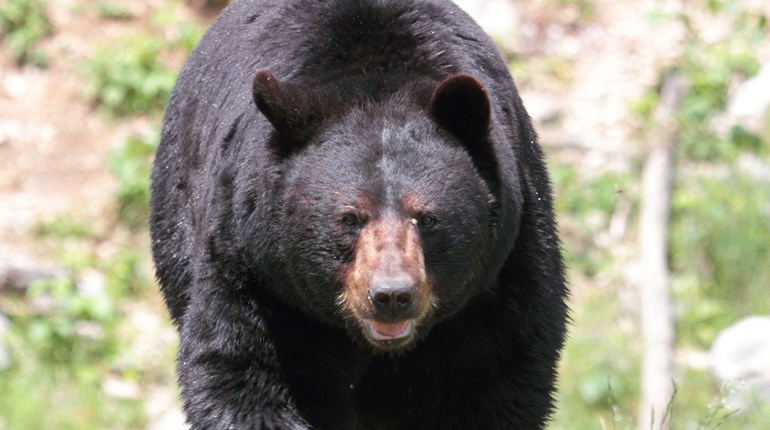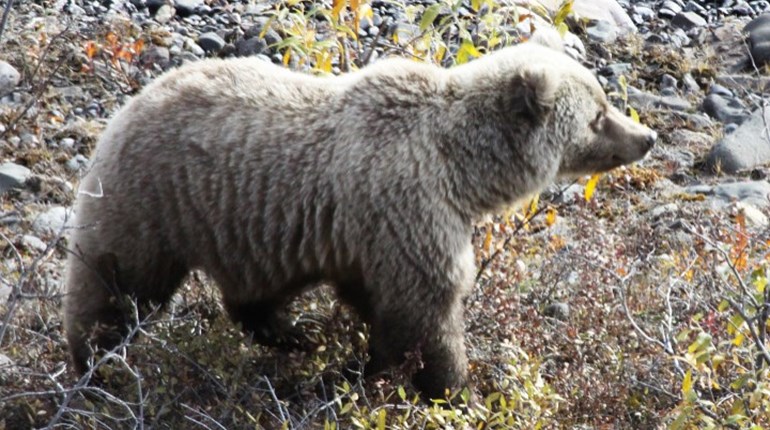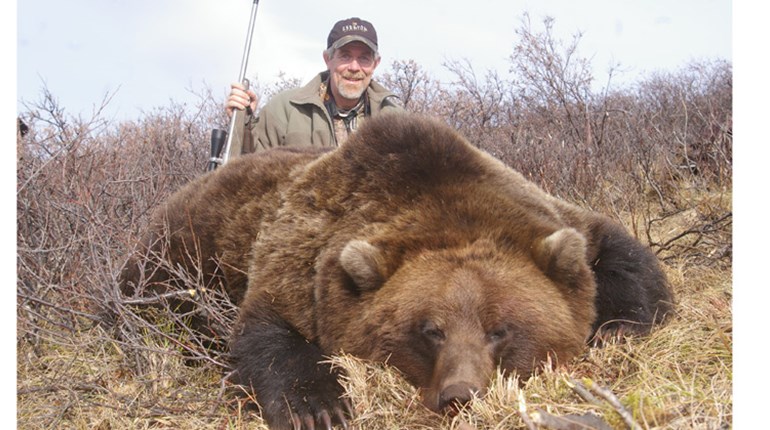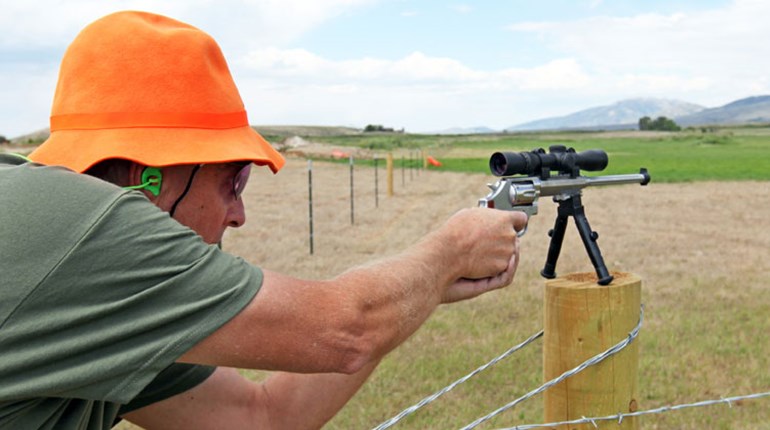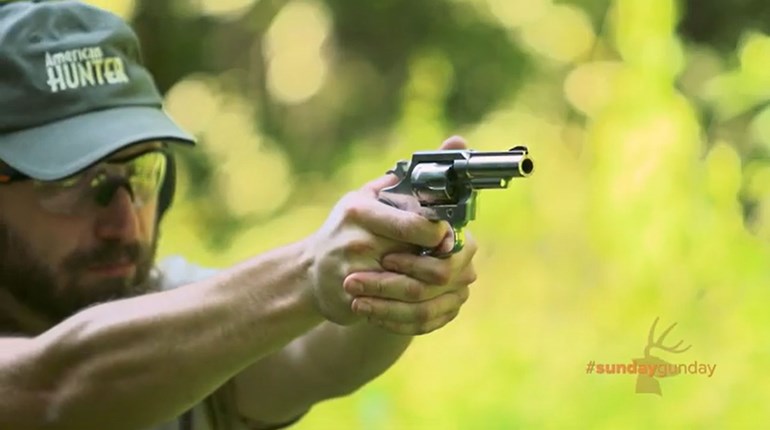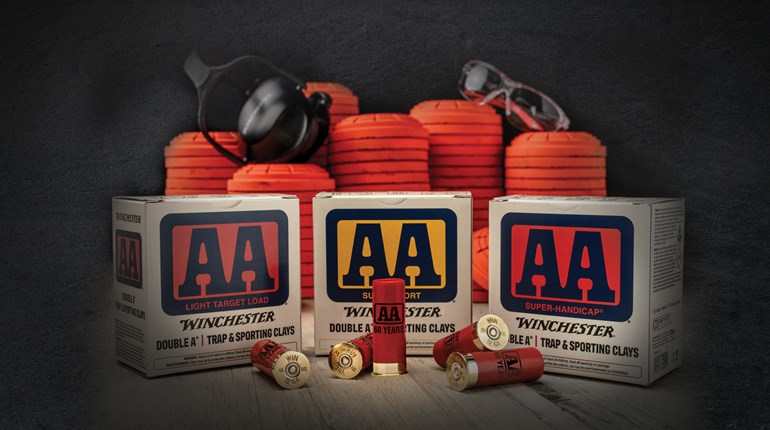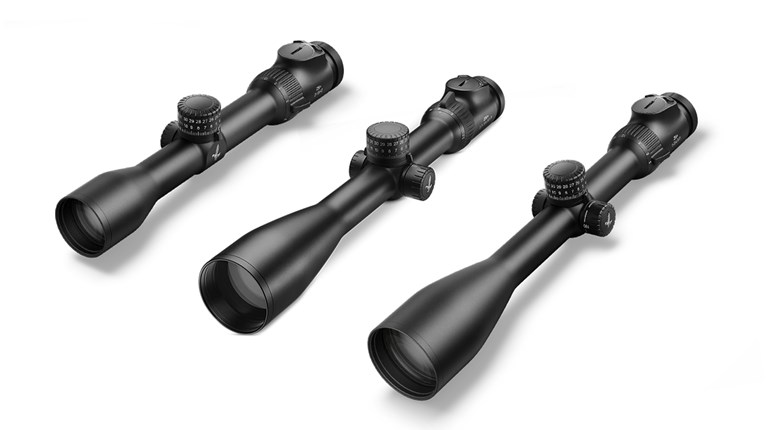Once you peer into the eyes of death— assuming you survive—you never forget those eyes, that look. Blind luck enabled me to survive a grizzly bear attack in 1986, and the look in the eyes of that bear is a vision tattooed into my psyche: menacing, intense, focused on one thing—the kill.
Last winter I saw those eyes, that look, again. One morning, while shaking the sleep out of my brain, I headed to the kitchen looking for some coffee. Glancing out the backdoor slider of our Arizona home, I encountered those same eyes of death. A coyote stood transfixed, staring at his prey: our 20-pound dog that was sound asleep. Only a thin pane of glass separated predator from unsuspecting prey. I hollered. In response, the coyote glanced up at me, turned and trotted into our backyard. Grabbing my camera, I stepped outside. The coyote seemed unfazed: It meandered next door, checked out the neighbors’ deck then went into their front yard. It had zero fear of me.
Why should it? In many modern urban and suburban areas, predators have become part of the daily landscape. Coyotes, black bears and mountain lions are expanding their hunting grounds into city streets and backyards, in some cases operating with apparent disregard for any consequences.
This year, newspapers and television have covered sensational stories of predator incidents throughout the country. In Colorado Springs, Colo., a black bear rolled a restaurant dumpster around and climbed inside for a midnight snack. A Cadillac, Mich., 12-year-old girl out jogging was attacked by a black bear that left her with cuts and gashes deep enough to require stitches. A mountain lion attacked a horse near the city limits of a small western Montana town. Sensational headlines reveal a pervasive and growing problem facing municipalities, animal-control and state wildlife agencies.
City limits continue to expand. As more and more people migrate into suburbs, wild land succumbs to development. The wildlife species impacted either flee or move in with their new neighbors. Whitetail deer have long been a problem at the fringes of urban centers. Rabbits, squirrels, Canada geese, ducks and other small game also do well in less-than-wild environments. Predators like coyotes, foxes, bears, bobcats and mountain lions willing to tolerate human interaction follow suit. Why not? The hunting in urban and suburban areas is great.
Coyotes present the greatest problems. They’re prolific, reproduce quickly and adapt effectively in almost any environment. Today you’ll find them sharing the streets in megalopolises like Chicago, Boston, Los Angeles, Phoenix and New York, as well as in small communities nationwide. In some areas, like our Arizona suburb, coyotes are born and raised, live and prosper with little human interference. The neighborhoods are rich hunting grounds replete with desert cottontails, quail, cats and small dogs. Residents are warned not to approach coyotes, to be watchful when letting out their cats and dogs and to be cautious when walking pets. Reports of dogs on leashes being pulled away from people are rare, but such things have happened. When coyotes are sighted, neighborhood patrols warn people walking for exercise or with their dogs. In most places discharging firearms within city limits is illegal, so people are encouraged to carry a loud whistle.
Those who fantasize that a whistle will deter a coyote might take note of the real-world experiences of some people.
Oklahoma resident Frances Curtis put her dachshund, Heinrich, out in the back yard, only to hear it bark in a way she’d never heard before. Stepping out the back door, she found the dog in a fight with a coyote. There wasn’t enough time to retrieve her gun, so she picked up the nearest object, a shovel. The coyote ran off only after she whacked it twice with the implement. Heinrich was tended to by a veterinarian, but Curtis remains shaken by the brazen viciousness of the incident.
In Riverside, Ill., a forested community on the banks of the Des Plaines River, a resident let out his dog before going to bed. Not long thereafter, the dog came running with four coyotes in pursuit. Shutting the glass slider didn’t deter the pack. The coyotes broke several panes of glass on both the outer door and the main entry door trying to get at the barking dog inside. The critters left only after the resident shot two of them with a high-powered BB gun.
In another incident in Riverside a few weeks earlier, a 7-month-old bichon-poo and a larger 70-pound dog confronted coyotes in their back yard. Injuries to the bichon-poo proved fatal.
Coyotes likely attack cats and dogs for food. The Cook County, Ill., Coyote Project (urbancoyoteresearch.com) has done exhaustive research on coyote attacks on both pets and humans. Its website reports that the average number of coyote attacks on domestic pets in the Chicago area increased from zero to two in 1990 and from six to 14 in 2004. Attacks on humans are rare, but have occurred. Two people, a 3-year-old girl in 1981 in California and a 19-year-old woman in 2009 in Nova Scotia, died from coyote attacks. Most human attacks involve coyote bites; some of the coyotes have carried rabies.
While these statistics pale in comparison to the numbers of people annually bitten or killed by domestic dogs, they represent a burgeoning problem. Prudence suggests that any coyote behaving with little concern for humans should be reported to local police, animal-control or wildlife agencies.
Black bears present the greatest problems when their traditional food sources become scarce. A classic case occurred in 2012, when Aspen, Colo., police responded to 1,040 bear calls. Widespread drought had destroyed traditional food sources such as berries and acorns, prompting bears to scrounge through residential garbage, dumpsters and other human-provided enticements, including barbeques, and bird and pet food. Of those cases, only a handful involved bears breaking into homes or cars. Two bears were euthanized, one relocated. This year, natural food supplies for the bears have been ample, and Aspen police have thus far responded to 12 calls. Yet the old adage “a human-fed bear is a dead bear” is hard to dismiss. Confronting a black bear rummaging through your garbage is a scenario best left to fright movies. In the long run, the bears usually lose.
People living on the fringes of cities where bears roam are certain to experience such conflicts. Some experiences have led to puzzling responses. In 2012, Connecticut newspapers reported that an 82-year-old man killed a black bear he claimed was raiding his bird feeder. Because black bear hunting is not allowed in Connecticut, the man was arrested.
Florida black bears are a threatened species. In 2009, their protected status prompted the arrest of a Fort Meyers resident after he shot one and claimed he was protecting his family. A media frenzy this past summer erupted in Massachusetts after a man shot a black bear in his rural back yard, fearing it was threatening a litter of puppies there. When the local police posted the incident online, a flood of responses—many critical of the man who shot the bear—forced the police to shut down their Facebook page.
Grizzly bears menace property, too. They’ve mauled people near urban areas in states with grizzly populations. Alaska, Montana, Wyoming and Idaho have extensive bear-aware programs that promote safe garbage disposal and appropriate use of pet and bird food.
Of broader national concern are mountain lions. Commonly called cougars or pumas, they are one of North America’s most reclusive predators, and they are proverbial killing machines. Fear rises quickly when one stares into the golden eyes of a crouched lion, its tail twitching.
North Idaho’s Zach Smeltzer can tell you about that feeling firsthand. Days before leaving for college in California, he was bowhunting within sight of his home on opening day of 2012’s archery season. A whitetail buck he’d patterned was leaving a field, and Zach, in full camouflage, was waiting in ambush. Hearing a noise behind him and thinking it was another deer, Zach drew his Quest Compound G5 bow and turned to see a crouched mountain lion staring straight at him only 14 feet away. Never anticipating such an encounter, Zach wasn’t carrying a pistol. With the small of the cougar’s back his only target, he aimed and released his arrow. The lion jumped, turned and bounded away.
“I really wasn’t afraid until that point,” Zach says. “But as I covered the 400 yards to my house, I began to shake.”
He called his dad and a friend, and two hours later the three of them returned with handguns. After a while they found the cougar 80 yards from where Zach had shot. Not wanting to waste the meat, they dressed the cat and put it in a freezer. Idaho has a mountain lion season, but unfortunately for Zach, it wasn’t open in that area. Idaho Fish and Game cleared the incident as self-defense. Zach didn’t get to keep the lion, but the event remains a lifetime memory.
Reflecting on the fact that the cougar was on the property of an 80-year-old Korean War veteran, an Idaho Fish and Game official told Zach, “This could have turned out very differently. It would certainly have become a problem we would have had to deal with. You did us a favor!”
Unlike many grizzly attacks in which the bear is protecting a kill or its cubs, attacking black bears or mountain lions usually have one intention—to kill you. Bears habituated to humans, either by food or constant exposure, present the most danger. Young cougars, typically hungry males searching to establish a territory, are often the most aggressive. Old, injured, malnourished lions driven by hunger also have been known to become aggressive. Young children or small adults are most vulnerable to attack, yet lions have killed adults, including some athletes running or biking.
Mountain lions are expanding their range from Western states and Florida. Actual sightings or physical evidence have been noted in 11 Midwestern and Eastern states. Though most biologists believe populations of mountain lions are healthy in Western states, in recent years anti-hunting movements have arisen to protect mountain lions, particularly opposing hunting with dogs. Essentially, banning or restricting hunting options limits biologists’ ability to control cougar populations. California residents in 1990 passed Proposition 117, which banned all mountain lion hunting and made the animals a “specially protected species.”
This fall California further expanded its oversight of mountain lion control. The governor signed into law a bill requiring California Department of Fish and Game officials to use nonlethal procedures when responding to mountain lions not designated as public health threats. Finding a mountain lion in a back yard apparently is no longer enough to justify wildlife officers’ use of professional expertise to deal with such incidents.
In Oregon hunting for cougars is allowed, but not with dogs. This year Oregon’s House of Representatives passed a bill reintroducing hunting with dogs in an effort to return to a practice banned by voters in 1994. The bill died in the Oregon Senate, despite increased sightings of mountain lions throughout the state.
In 1996 Washington voters passed a statewide initiative—I-655—banning cougar hunting with dogs. Cougars continued to be hunted without dogs in a liberal general season. Dogs were used only under WDFW authority to address specific public-safety issues with cougars. In 2004, in response to complaints of lions killing livestock and other conflicts with humans, particularly in the northeastern part of state, the legislature approved limited cougar permit hunts with dogs in some game management units. In 2011 the legislature dropped the permits with dogs. At the same time, overall cougar hunting harvest was reviewed, based on cougar population research. In 2012 Washington standardized the cougar hunting without dogs season (Sept. 1-March 31) that uses harvest guidelines and closes units after Jan. 1 when harvest guidelines are reached. Today, dogs can be used on cougars in Washington only under WDFW authority to address public safety issues.
Control of predators certainly incites impassioned controversy. Phil Cooper, an Idaho Department of Fish and Game information officer, said it best: “Anytime we have a problem with any predator, someone is unhappy. Those who lose a pet or livestock are mad that we can’t control the situation. When we do remove a problem animal, someone always complains that the animal was only doing what wild animals do. As humans move deeper into what have always been wild lands, these problems will continue to plague us. We may not like it, but it’s a problem we must learn to live with.”
As this is written in September, St. Maries, Idaho, school officials this week locked down their schools. A mountain lion was seen strolling through an alley near the local grade school. The drama, the problem, continues.












